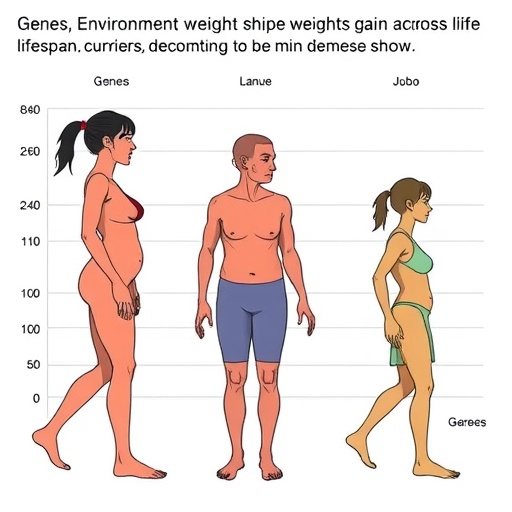In recent years, social media has reshaped the landscape of how information is disseminated and consumed. Among various platforms, TikTok has emerged as a prolific medium for sharing personal experiences and insights, particularly regarding complex topics like autism diagnosis. A groundbreaking study conducted by Brennan et al. (2025) delved into this phenomenon, investigating how adults navigate and present their autism diagnoses on TikTok. The research not only highlights the richness of content but also the implications for broader societal understanding of autism.
The objective of the study was to conduct a comprehensive content analysis of TikTok videos that discuss autism diagnosis among adults. With millions of users posting daily, TikTok serves as a unique environment for creating communities where individuals can share their narratives regarding diagnosis, symptoms, and the personal implications of living with autism. By focusing on the cross-sectional data drawn from this platform, the researchers aimed to uncover trends, common themes, and significant gaps in the information presented in these videos.
One of the remarkable discoveries of the study was the diversity of content shared by TikTok users discussing their autism diagnosis. Many users presented their experiences in ways that were both vulnerable and informative, addressing the stigma surrounding autism and promoting understanding among viewers. The researchers classified the content into several categories, such as personal stories, informational content, advocacy messages, and debunking myths about autism. This layered approach allowed them to analyze how individuals utilize the platform to communicate complex issues while also fostering a sense of community.
An essential aspect of the analysis was how the format of TikTok itself influences the presentation of information. Given the platform’s reliance on short video snippets, users have become adept at condensing complex narratives into bite-sized portions that can engage a wide audience. Each TikTok clip often employs hooks, humor, or poignant storytelling techniques to captivate viewers, thus elevating the critical dialogue around autism diagnosis. The researchers noted that this method of communication can sometimes oversimplify the lived realities of individuals on the spectrum, raising important questions about the potential for misinformation or misrepresentation.
Moreover, the study identified significant variations in the type of information shared based on users’ demographics, such as age, gender, and geographic location. For instance, younger users often employed more contemporary vernacular and trends in their narratives, which may resonate more with their peers. In contrast, older users might emphasize clinical explanations or personal histories, reflecting their different societal contexts. This disparity underscores the necessity of recognizing how diverse perspectives contribute to shaping public discourse about autism across generational lines.
Importantly, Brennan et al. also considered the impact of algorithms that dictate what content becomes viral on TikTok. The researchers pointed out that the platform’s algorithm tends to favor engaging and shareable content, which can skew the representation of autism experiences. Consequently, certain types of videos, particularly those that are humorous or sensationalist, may receive disproportionate attention, leading to a potential misunderstanding of autism. This phenomenon not only affects public perception but also influences how individuals view their own diagnoses.
The findings of this study contribute significantly to the understanding of autism in contemporary discourse, highlighting the potential benefits and drawbacks of social media platforms like TikTok. On one hand, these platforms can serve as vital sources of communal support, allowing individuals to connect and share their struggles or triumphs. On the other hand, they also risk spreading misleading or incomplete information about autism, which could further entrench stereotypes or misunderstandings among audiences.
Additionally, the research opens up new avenues for future studies to explore the qualitative aspects of these narratives. Understanding the lived experiences of individuals with autism through social media not only enriches the academic discourse but also has real-world implications for mental health services, public policy, and educational initiatives. Researchers might consider examining the psychological effects of online representation, particularly how individuals with autism respond to the content generated by their peers.
As part of their conclusion, the study reflects on the essential role that platforms like TikTok play in democratizing information about autism. The rapid dissemination of varied perspectives enhances collective understanding, painting a more nuanced picture of what it means to live with autism in today’s society. This research serves as a reminder of the power of individual narratives in shaping perceptions and challenging established norms.
In determining the potential for TikTok as an educational tool, the implications are significant. Content creators on the platform can harness their reach to serve as advocates for autism awareness and education, paving the way for increased understanding and acceptance. However, the need for critical engagement with the content being produced remains paramount. Stakeholders, including educators, mental health professionals, and policymakers, must grapple with how to effectively utilize these narratives while ensuring that they are based on accurate information.
In retrospect, Brennan et al.’s study is a pivotal exploration of the intersection of social media and health communication. By unpacking the myriad ways that people discuss autism diagnosis on TikTok, the research paves the way for future investigations into digital health communication strategies. It emphasizes the need to critically engage with social media content while recognizing its potential as a catalyst for awareness, education, and community building.
As researchers and practitioners look toward the future, it is crucial to continue monitoring the evolution of content surrounding autism on platforms like TikTok. The ongoing development of social media landscapes presents both opportunities and challenges for the dissemination of health information. Understanding the dynamics of these platforms is vital for leveraging their potential to foster informed discussions and enhance societal awareness about the complexities of autism.
Ultimately, the research underscores a broader societal responsibility to create environments where individuals with autism can share their experiences authentically and safely. The integration of their voices into the public narrative is not just about representation, but about fostering an inclusive society that recognizes the rich tapestry of human experience.
Subject of Research: Deconstruction of information regarding autism diagnosis on TikTok.
Article Title: Deconstructing Information About Autism Diagnosis in Adults on TikTok: A Cross-Sectional, Descriptive Content Analysis.
Article References:
Brennan, E., Lampinen, L.A., Paek, H. et al. Deconstructing Information About Autism Diagnosis in Adults on TikTok: A Cross-Sectional, Descriptive Content Analysis.
J Autism Dev Disord (2025). https://doi.org/10.1007/s10803-025-07123-0
Image Credits: AI Generated
DOI: https://doi.org/10.1007/s10803-025-07123-0
Keywords: Autism, TikTok, social media, diagnosis, content analysis, health communication, misinformation, community building.
Tags: adult autism diagnosis on TikTokcommunity building on TikTokdiverse autism content on TikTokimplications of TikTok for autism awarenesspersonal narratives of autismresearch on social media and autismsharing autism experiences onlinesocial media impact on autism awarenessstigma surrounding autism diagnosisTikTok content analysis autismtrends in adult autism experiencesunderstanding autism through social media





